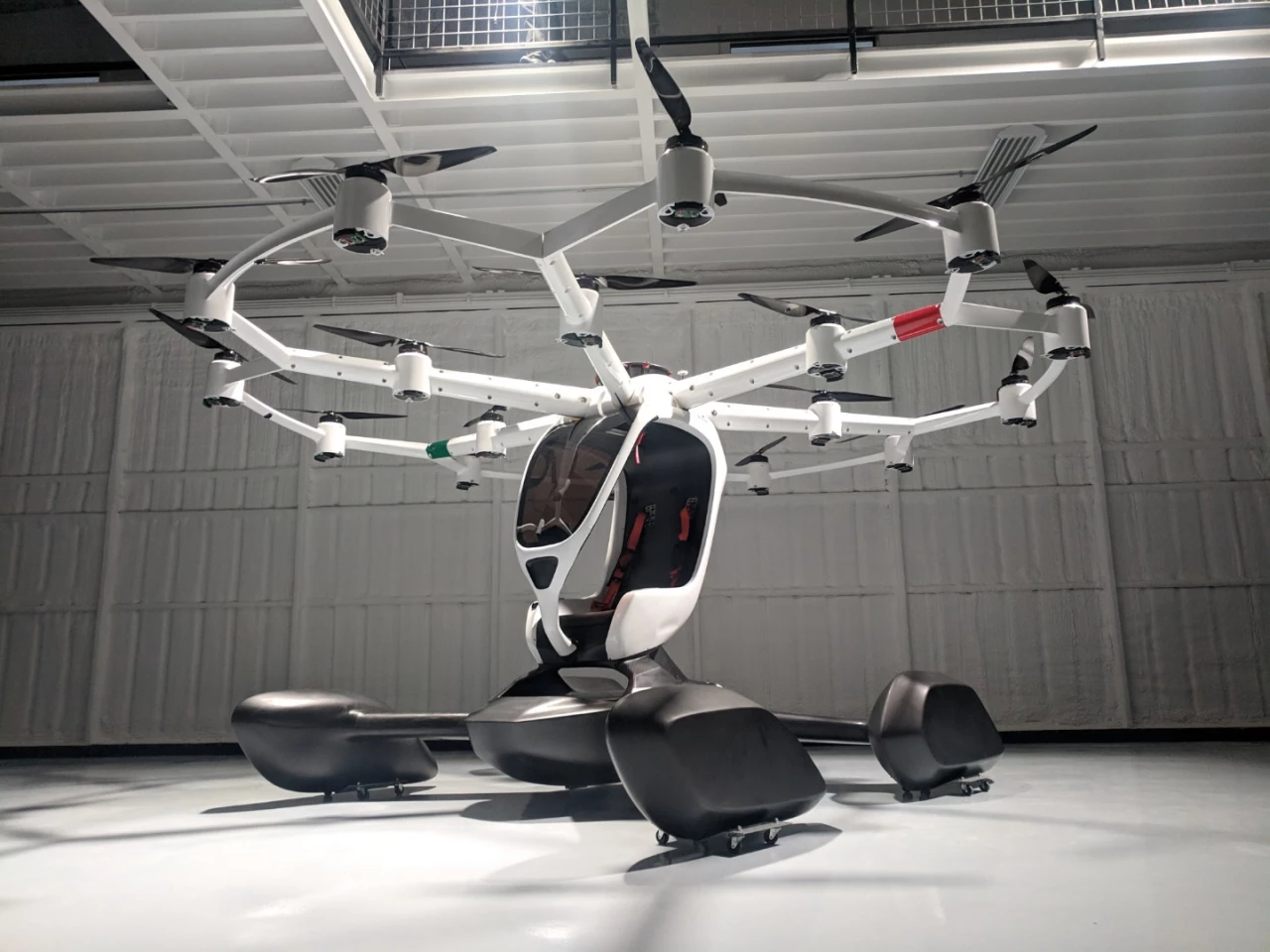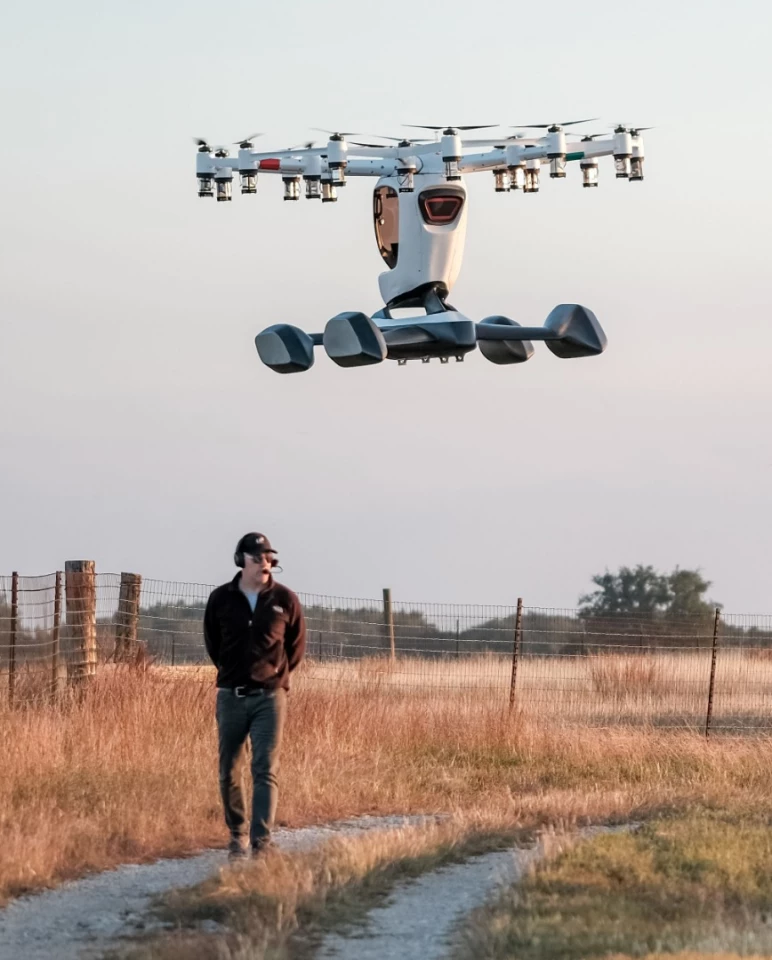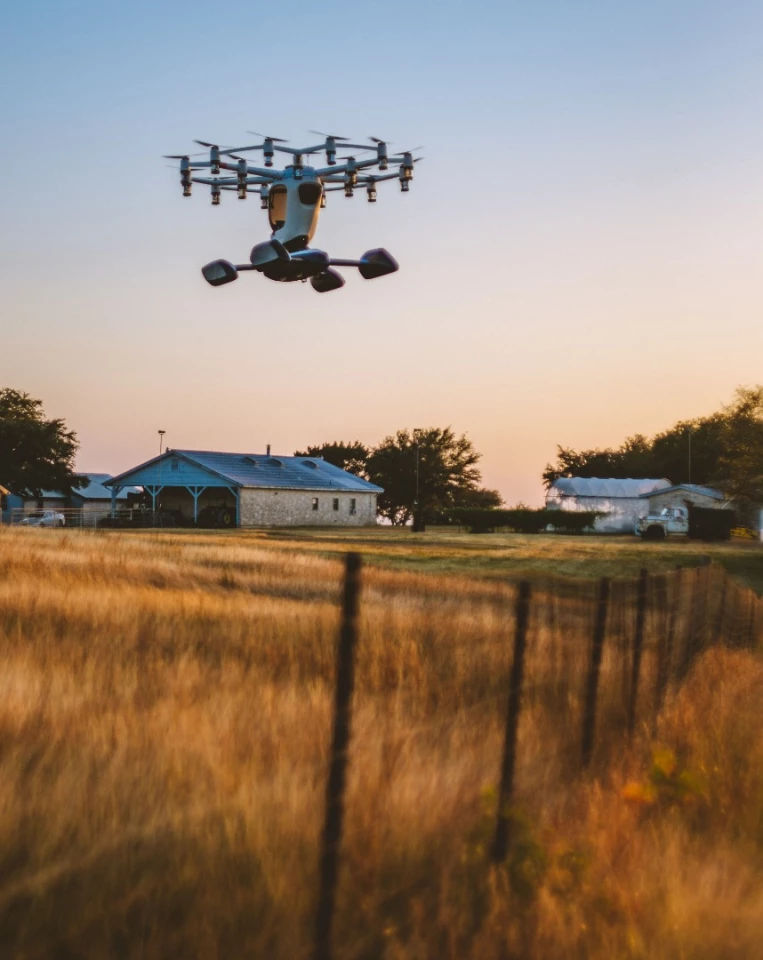Flying taxi services like Uber Elevate may take some time to arrive, but if you want to be among the first to pilot a manned multicopter, you'll have the chance in 2019. Lift Aircraft is preparing to debut a personal flight experience in an 18-prop electric VTOL aircraft for about the price of a skydive.
We've known for nearly a decade now that manned electric multirotors are coming. And while early attempts at flying these things looked utterly terrifying, more recent efforts like the Kitty Hawk Flyer and the Volocopter are starting to look much more like finished aircraft than widowmakers.
Now, Lift Aircraft, a company started in Austin, Texas, is bursting out of stealth mode with a beautiful single-seat multirotor design called the Hexa, which it has already flown with its CEO on board (see video at the end of this article). And instead of selling these things, it plans to rent them out for personal flight experiences all over the United States.

The Hexa aircraft
The Hexa is an 18-rotor electric multirotor with a simple, lightweight, carbon fiber single-seat cabin, four landing floats suitable for land or water, and a very simple control system based on a joystick and an iPad Pro.
Unlike a helicopter, which is complex and finicky to fly, the 432-lb (196-kilo) Hexa really is just like a big drone with a seat in it; a flight controller and a raft of sensors do most of the flying for you. It can take off and land at the touch of a button, and if a pilot lets go of the stick, it will hover in a GPS-locked position and stable altitude. If a pilot really freaks out or starts causing trouble, ground staff can take over with hand controllers and bring them back down.
Unusually, the Hexa doesn't have one central battery pack. Instead, it has 18 small batteries, one clipping on underneath each rotor. Lift CEO Matt Chasen explains why over a Skype call: "Batteries are one of the least reliable parts of the powertrain. The motor and the prop are reliable, there's very few moving parts, but the batteries tend to have more failures than those. So even though such events are very rare, we didn't want to have large, centralized battery packs. We have our batteries mounted at the top and the perimeter, away from the pilot. So if there's an event, a thermal runaway in a battery, it's controlled, and won't injure the pilot."
A side benefit to this design is that each small battery sits right in the cooling airflow of the prop above, negating the need for any liquid cooling. And it plays perfectly into Lift's intentions to run the things all day long: the batteries will last around 10-15 minutes per flight, and as soon as Hexa lands, ground staff can unclip them, switch them over with charged batteries, and prepare the aircraft for its next flight.

The Lift flight experience
Pilots will undertake a brief VR training session before they head out to the launch pad, to familiarize themselves with the control scheme. On the joystick, it's as simple as push to go in any direction, with a thumb control for altitude and an index finger control for yaw (the company initially thought a twist-to-turn yaw control would be more intuitive, but found it harder to use in flight tests than a separate control).
The iPad touchscreen console will make things even simpler for beginner pilots, enabling one-touch takeoff and landing, and walking you through simple beginner tutorials much like you'd do as a first timer on a DJI drone. "There's not a lot of training required," Chasen tells us. "It's sort of like a video game, a game that you get to fly in."
From there, you're off. As the Hexa will be flying under the powered ultralight classification (meaning it requires no certification or pilot's license), you'll be limited to flying under 700 feet, or 1200 feet in some locations, and not over any populated areas. Maximum speed for ultralights is 55 knots, or about 63 mph/101 km/h in terms of ground speed, and Chasen says if the Hexa turns out to be capable of going faster than that, it'll be electronically restricted from doing so. The aircraft will also be geofenced to a permitted flying area.
In the future, Lift will roll out a level-based system that lets you unlock extra speeds or maneuvering abilities, as well as potentially some augmented reality gaming ideas. "Yes! We expect to game-ify it a little bit," says Chasen. "After all, this is an entertainment business. We'll do augmented reality dogfights, and let groups fly. Maybe it's a bit less fun if you're by yourself, but we expect people will be able to go up in groups, fly in formations, race through virtual rings, that sort of thing."
The aircraft should be fine for any pilot over 18, under around 250 lbs (113 kg) and shorter than around 6 foot 7 (200 cm). It could carry heavier pilots, says Chasen, but "we're doing a tradeoff between weight and flight time there, we don't want people to have too short a flight time, and it does trail off quite quickly with additional weight."
The price? "We're going to charge around about the same price as for other similar adventure-type activities, like skydiving, hang gliding, those sorts of things," says Chasen. "It's gonna be in the area of US$150 to $250."

Safety Considerations
It goes without saying that safety is of the essence in any sort of public-facing operation – and Lift plans to take no chances. For starters, they'll only take off if the weather conditions are optimal.
The aircraft will be networked to know each others' locations, and the flight controller won't allow them to fly within a certain radius of each other. "You've probably seen videos of these swarms of drones doing complex maneuvers," says Chasen. "We're going to be using some of the same technology there to make sure there's adequate spacing. In fact, each aircraft will have a kind of geo-sphere around it. You could try to fly two aircraft into each other, but they'd literally bounce off one another without touching."
The Hexa is able to operate safely with up to six of its motors down, but it also runs a ParaZero ballistic parachute in case of total failure. As we've noted in previous manned multirotor stories, though, such 'chutes can't slow you down in time below a certain height, leaving a "death zone" between about 10 feet and their minimum safe operating zone.
We ask Chasen what he's planning to do about this death zone. "Great question," he says. "The ballistic parachute we're using is specifically designed for multirotors, and it's effective down to about 12 meters (40 ft). This is a patented design made by an Israeli company called ParaZero, it's a great product. I think we're the first of that company's customers to be flying a manned multirotor.
"Despite that, 12 meters is still high enough, so we intend to take off from raised platforms, or have our locations built with helipads on top of existing structures like large parking garages. So we'd operate out of buildings that are already at least that high off the ground. So you can hover at a few meters high, and as soon as you fly away from the helipad, you're already at that safe deployment altitude."
While that clearly restricts the places Lift can operate in, it seems like a terrific way of getting things up and running in a way that's as safe and simple as possible.

Opening in 2019
Matt Chasen is thinking big with Lift Aircraft. While he's got an aviation background (including a mechanical and aerospace engineering degree, and a CV including time working at Boeing and NASA), he's spent the last 15 years building up uShip, a large, venture-backed, international transport marketplace.
So the plan isn't to get a few of these Hexa aircraft up and running. It's to get at least 25 cities on board. "We're looking at options for our first locations at the moment," says Chasen. "We haven't yet decided. Starting next week, we're going to take advance reservation requests from people, and we're picking 25 cities in the US. We'll try to launch our locations based on the order of interest and demand from people out there.
"Twenty-five locations will take years and years to build out. But we expect to have our first location up and running by mid to late next year. Hopefully the following year in 2020, we can have 3 to 5 more locations. We think we'll start with just 2 or 3 aircraft per location. It's quite expandable, so it's relatively easy, if the location permits, to add more aircraft if there's more people that wanna fly.
"We recognize that people living in the communities nearby need to get used to having large drones flying around. They're not very loud, but they're also not whisper-quiet, either. Actually, one of our ideas is to take these 25 cities, and bring a mobile, experiential entertainment trailer, and bring three aircraft around on a roadshow tour of the US, letting people fly in each city we go to. Meanwhile, we'll also be figuring out which cities are most receptive to having us operate. Flying will also be seasonal in different parts of the US. We'll time things so that Lift is in your area when it's time to fly."
The service will likely be restricted to the United States, simply because of the FAA's peculiar rules that allow powered ultralights to fly without certification or pilot's licensing. In most other regions, pilots would need a ticket, making this kind of experience a lot less time- and cost-effective.
The public will get its first look at Lift and the Hexa in March 2019 at the South by Southwest Airshow in Austin, Texas, where Chasen tells us the company will likely run its first flights with civilians at the helm. There may be a chance for media folk to get in and have a go, and you better believe we'll have our hand up for that if the possibility arises!
Check out a video of Chasen flying the Hexa:
Source: Lift Aircraft
























